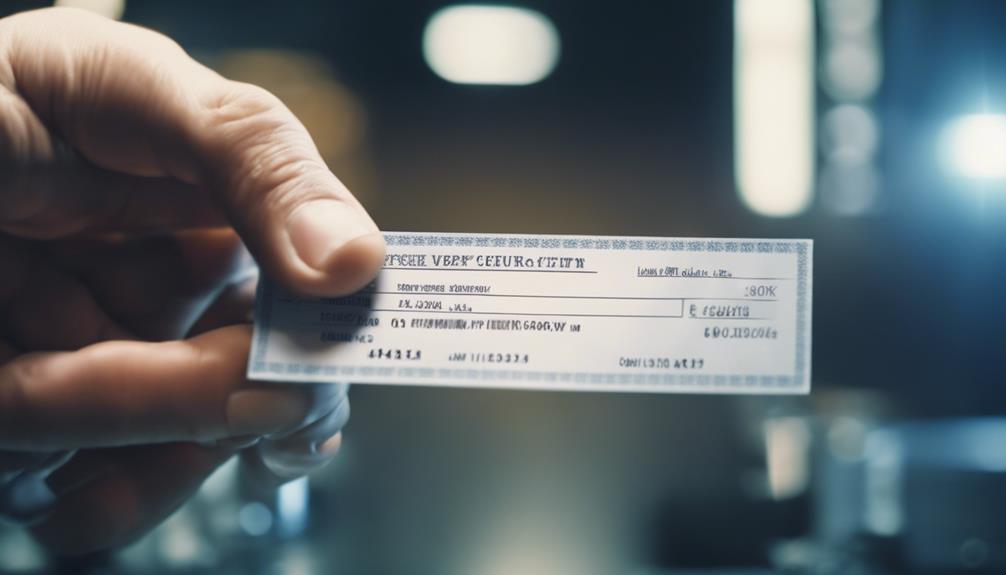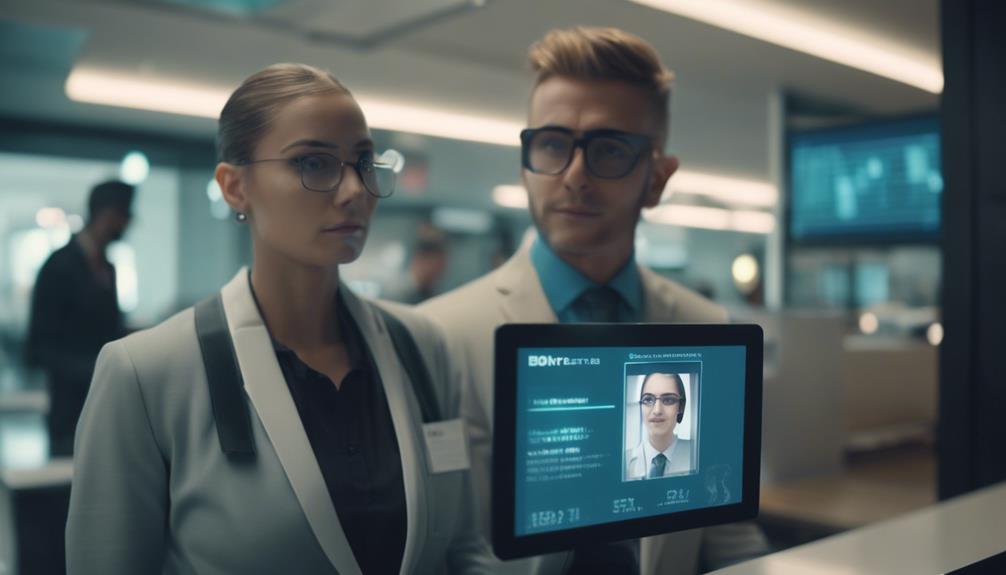When it comes to ensuring the integrity and check verification in check processing services, understanding the nuances of the six vital elements of check verification is essential. Each element plays a critical role in safeguarding financial transactions and preventing potential risks. By delving into the intricacies of Check Reader technology, MICR Line accuracy, Driver’s License Verification, Negative Database Check, Positive Database Check, and Check Writer History, you can gain a comprehensive understanding of how these elements work together to create a secure environment for check processing.
Check Reader
Utilizing a check reader enhances efficiency in processing checks by quickly capturing and interpreting data from the checks. Check scanning technology plays a pivotal role in this process, allowing for swift extraction of information such as the account number, routing number, and check amount. This digital check processing method not only expedites the verification process but also minimizes the chances of human error associated with manual data entry.
Bank account verification is another crucial aspect facilitated by check readers. By cross-referencing the extracted information with banking records, these devices ensure the legitimacy of the account and prevent unauthorized transactions. Incorporating fraud prevention techniques, such as signature verification and duplicate check detection, further fortifies the security measures in place.
MICR Line
The MICR line on a check contains magnetic ink characters that encode essential banking information for automated processing. Ensuring MICR line accuracy is crucial for seamless check verification processes using check verification software.
- MICR Line Accuracy: The accuracy of the MICR line is paramount for successful check processing, as any errors can lead to delays or rejections in transactions.
- Check Verification Software: Utilizing advanced check verification software can help financial institutions streamline the verification process and detect potential fraudulent activities promptly.
- Financial Institution Requirements: Financial institutions have strict requirements regarding MICR line standards to maintain consistency in processing checks efficiently and securely.
Driver’s License Verification
To enhance security measures and mitigate risks in check processing services, verifying the authenticity of a driver’s license is a critical step in ensuring the validity of the individual presenting the check. Identity verification through driver’s license checks serves as a reliable method to confirm the identity of the check presenter. By cross-referencing the information on the presented driver’s license with other databases, businesses can validate the individual’s identity and ensure they are who they claim to be.
Moreover, driver’s license verification also assists in age verification. For certain transactions, such as alcohol or tobacco purchases, ensuring that the individual meets the legal age requirement is crucial. By verifying the date of birth on the driver’s license, businesses can comply with age restrictions and prevent underage individuals from engaging in restricted activities. Implementing driver’s license verification as part of check processing services enhances overall security protocols and minimizes the risk of fraudulent transactions.
Negative Database Check
Performing a negative database check is a vital step in the verification process of check processing services to identify potential risks and prevent fraudulent activities effectively. By utilizing check verification software, financial institutions can enhance their fraud prevention measures and safeguard against identity theft. Here are some key aspects to consider when conducting a negative database check:
- Comprehensive Database Search: Check verification software scans a wide range of negative databases to flag any suspicious activity associated with the individual or account.
- Real-Time Updates: Regular updates to the negative database ensure that financial institutions have access to the latest information on fraudulent behavior and identity theft cases.
- Customizable Alerts: Institutions can set up personalized alerts based on specific criteria, allowing them to react promptly to any red flags identified during the check.
Positive Database Check
Conducting a thorough positive database check is crucial for enhancing the accuracy and reliability of check verification processes in financial institutions. When it comes to fraud prevention and identity verification, a positive database check plays a vital role. By cross-referencing the information provided on the check against a database of verified accounts, financial institutions can ensure that the account is valid and not associated with fraudulent activities. This step is imperative in maintaining transaction security and protecting the institution and its customers from potential losses due to check fraud.
Positive database checks are instrumental in validating the account details provided on the check, ensuring that the funds are being drawn from a legitimate source. By verifying the account information through a positive database check, financial institutions can mitigate the risks associated with accepting checks from potentially unreliable sources. This proactive approach to check verification not only enhances security but also builds trust with customers by safeguarding their financial transactions.
Check Writer History
Exploring the check writer history provides valuable insights into the financial behavior and credibility of individuals or entities issuing checks. Understanding the check writer history involves delving into various aspects, including:
- Check Writer Identity: Examining the identity of the check writer helps in determining if they have a history of fraudulent activities or if they are linked to any suspicious transactions.
- Bank Account Validation: Verifying the bank account associated with the check writer aids in confirming the legitimacy of the transaction and ensures that funds are available for processing.
- Transaction Patterns: Analyzing the history of transactions conducted by the check writer can reveal patterns of behavior, such as frequent overdrafts or suspicious activities.
Frequently Asked Questions
How Does Check Verification Protect Against Counterfeit Checks?
Check verification safeguards against counterfeit checks by verifying account details and flagging suspicious activities. It reduces fraud risks and enhances transaction security. Did you know that check fraud costs businesses $15.1 billion annually?
Can a Negative Database Check Prevent All Fraudulent Transactions?
Using a negative database check to prevent all fraudulent transactions has limitations. While it can flag known fraudulent activity, it may not catch new or sophisticated scams. Additional verification methods help strengthen overall protection.
Is Driver’s License Verification Mandatory for Check Processing?
When processing checks, driver’s license verification is a crucial identification requirement. It enhances security measures by ensuring the legitimacy of the transaction. Incorporating this step can help prevent fraudulent activities and protect both parties involved.
What Information Is Included in the MICR Line?
In the MICR line, crucial details like account number, routing number, and check number are encoded. These elements facilitate efficient check processing. Security features and verification technology ensure accuracy and reliability in financial transactions.
How Long Does It Take to Access a Positive Database Check?
When accessing a positive database check, verification speed is crucial. Ensure database accuracy for fraud prevention and transaction security. By promptly confirming checks, you enhance overall operational efficiency and reduce potential risks associated with fraudulent activities.



